Note: This statue has been moved. You can read a June 2016 update to this post here.
Just downriver from Eads Bridge in St. Louis, on the St. Louis riverfront, is a statue called The Captains’ Return. It depicts the return of William Clark and Meriwether Lewis, along with their dog, Scout, from their famous trip to explore the Missouri River. It was sculpted by Harry Weber.
I said it was “on the riverfront,” but it is sometimes more accurately described as “in the river.” In what I consider a brilliant placement, the statue was set in the cobblestones on the St. Louis wharf. The river level is subject to notoriously large swings; in the last 20 years, it has been as low as 0 feet and as high as 50 feet on the St. Louis gauge. This picture was taken when the stage was about 29 feet, which is one foot below the flood stage. (Don’t confuse “stage” with “depth.” Even at zero feet on the St. Louis gauge, there is still more than nine feet of water in the main channel of the river. Zero on the gauge refers to the “low water reference plane,” which I wouldn’t try to explain, even if I understood it.)
That’s Clark, in the picture, who appears to be waving at us for help. Less fortunate are Lewis and Scout; they’re below the surface in this photo, although you can see them in some of the pictures below.
This statue is one of my favorite things about St. Louis. I’m sure I’ve taken hundreds of photos of it over the last six years. It’s just a few feet south of Eads Bridge, another of my favorite things about St. Louis. And about half a mile away is yet another favorite, the Gateway Arch.
The statue was dedicated in September 2006, the 200th anniversary of the end of the Voyage of Discovery. There’s a plaque on the statue that reads: “At noon on September 23, 1806, the Lewis and Clark expedition ended on the St. Louis riverfront after a journey along the Missouri River to its headwaters, a passage of the Rocky Mountains, and a descent to the Pacific Coast via the Columbia River. Returning by roughly the same route, they arrived at St. Louis after two years, four months and nine days of exploring the lands and encountering the peoples of the American West.”
Here are a few more pictures of the statue (clicking on any of the thumbnails below will bring up a gallery you can scroll through). The last one, the only one in which you can also see the Arch, was taken this morning (February 27, 2012), when the river stage was about 4.25 feet.

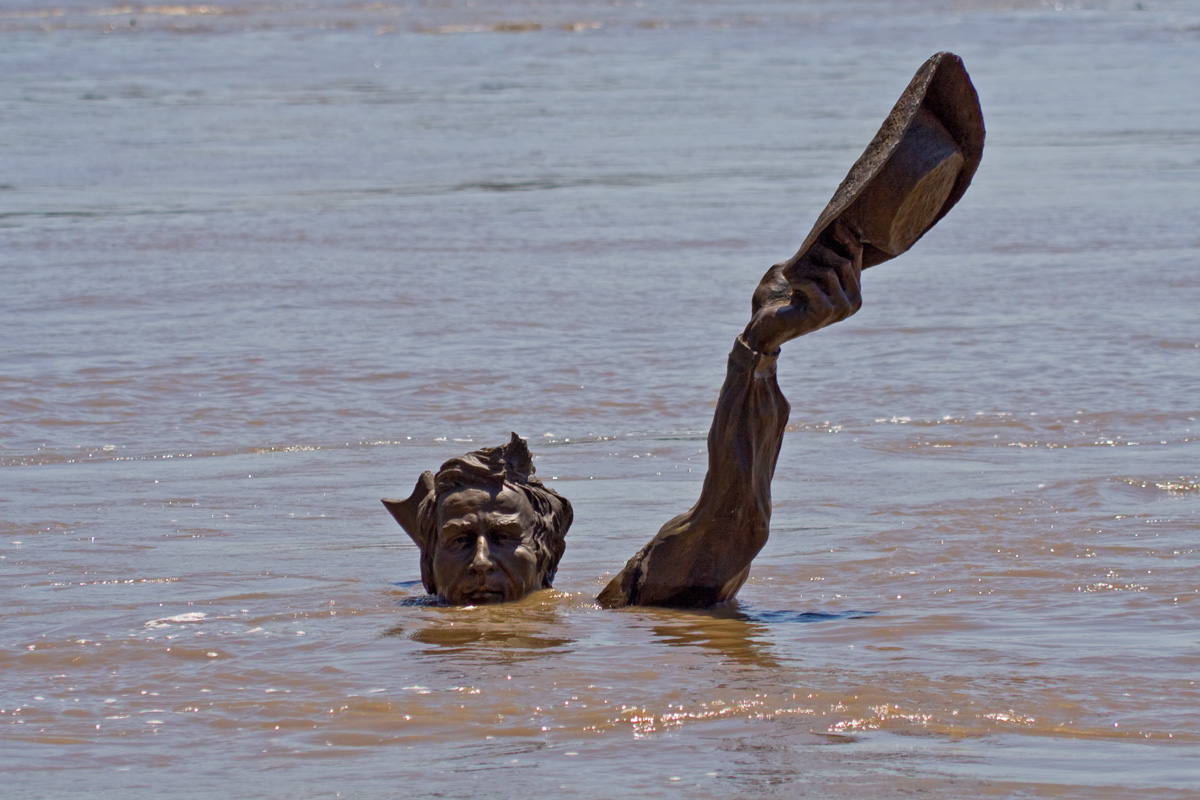
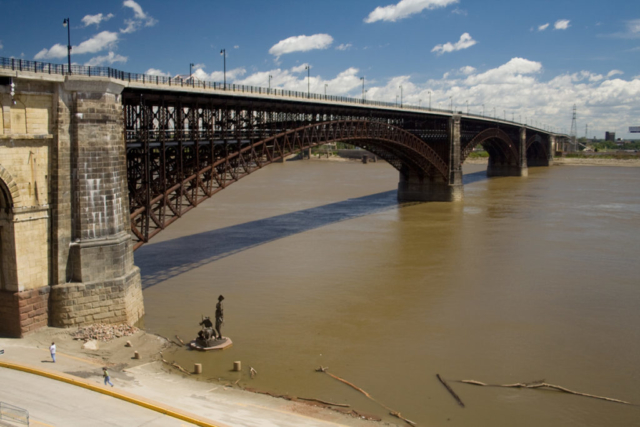
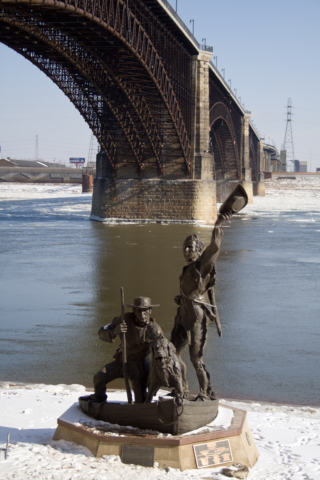
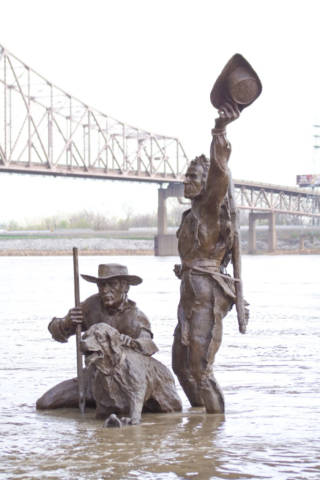
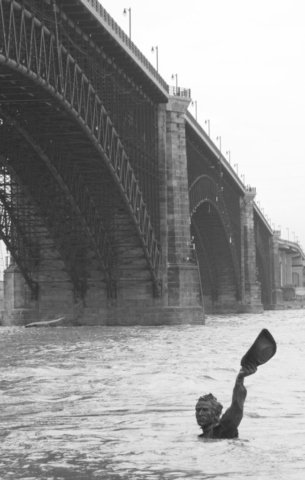
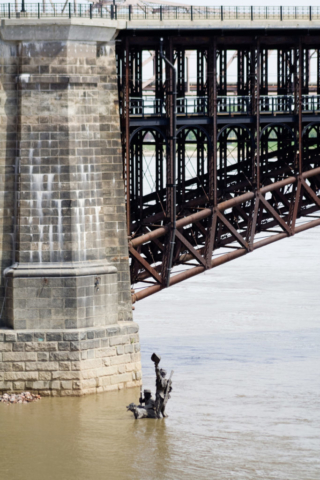
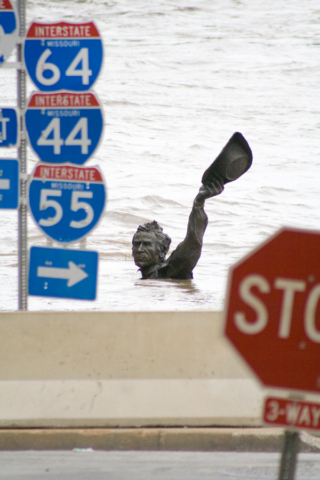

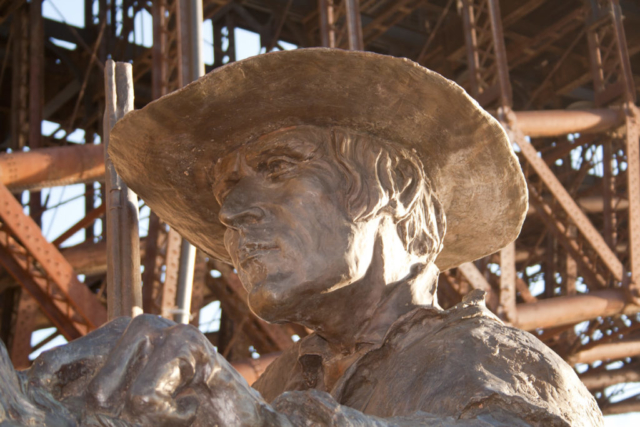
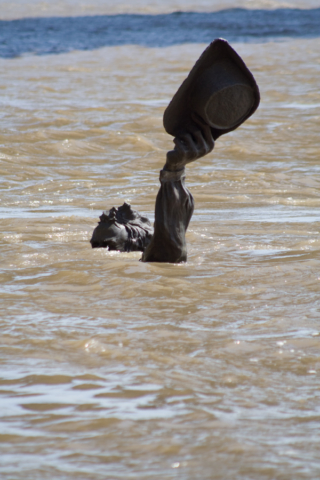
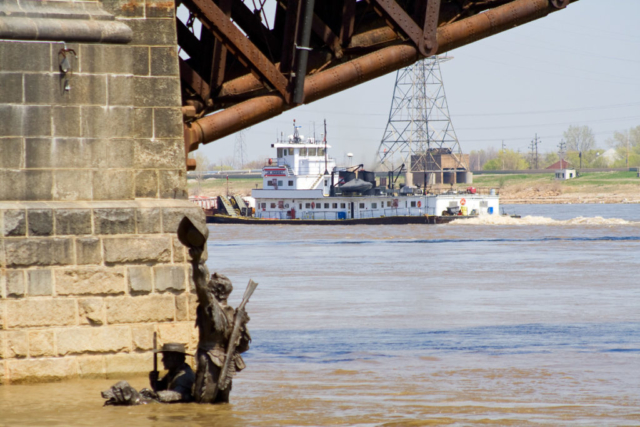
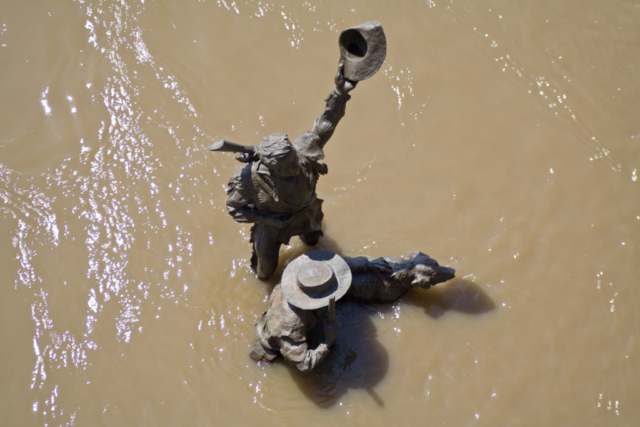

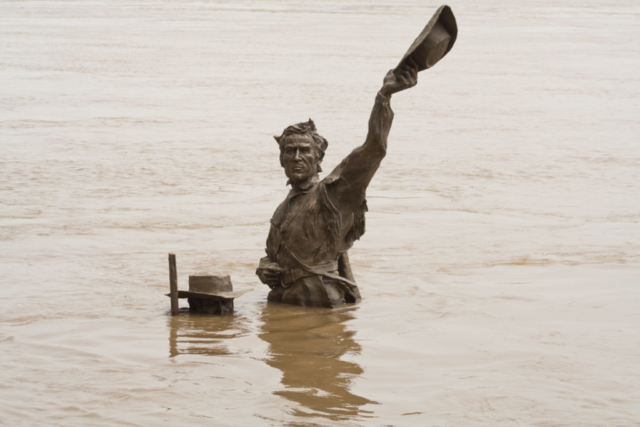
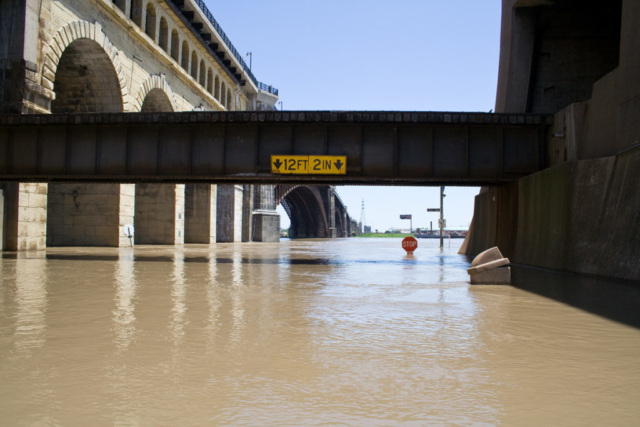
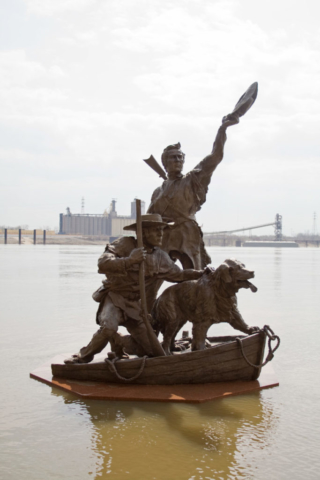
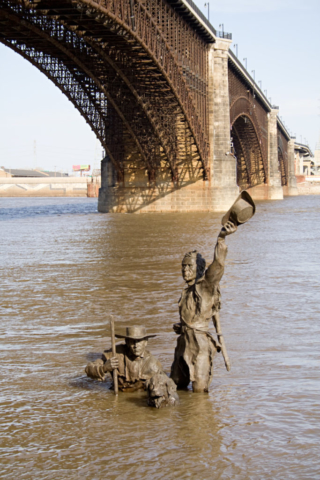
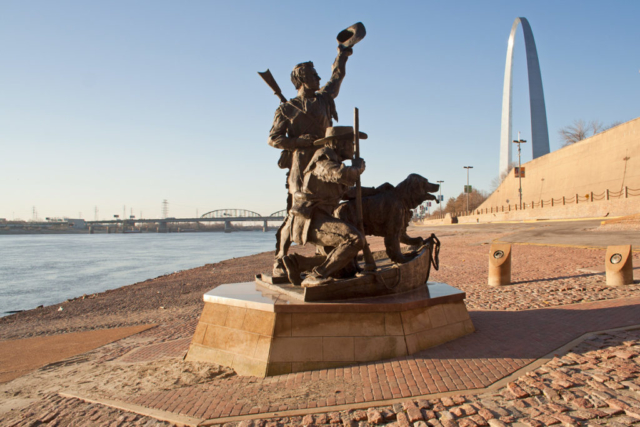
February 27, 2012
This is neat, John! I do love that statue. I have some pictures of my husband and I standing by the water when the river was covering the riverfront drive (what is that street called?) The highways signs are just barely sticking out of the water.
May 5, 2015
I am doing a presentation on flooding and I was wondering if I might use your picture of “The Captain’s Return” during the flood when discussing Mississippi River flooding. It is a straightforward PPT to local government officials. Should I not hear from you, I will not use the image.
September 11, 2015
There are certain things you can take hundreds of pictures of — and tomorrow morning, it will be different than all of them. The beauty of history+nature. Thank you, Sir. I’ve thoroughly enjoyed your article.